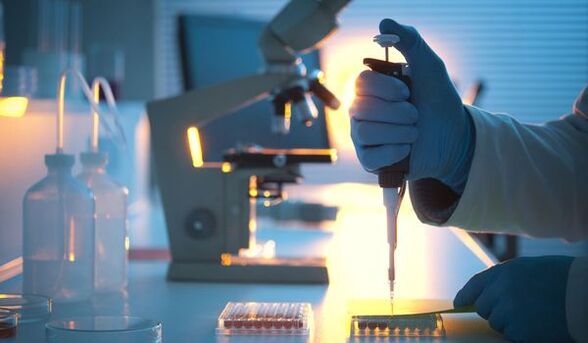Worm infestation - infection of the human body with parasitic worms - worms (helminths). Symptoms of helminthic invasion are determined by the way of infection, the number of parasites received, the degree of their adaptability in the human body, and other features.
The first signs of the disease in adults can appear both 2-3 days after infection, and after a year and a half, but usually the incubation period is 2-3 weeks.
Helminths do not tend to multiply in the human body (with the exception of pinworms and some other worms)
Ways of infection:
- contact household;
- alimentary;
- transmissible;
- percutaneous.
The source of infection is a sick person or carrier.
Classification of helminths
In adults, parasitism of more than two hundred varieties of helminths has been registered, which, according to their structural features, mainly belong to two types of worms:
- Roundworms are nematodes that cause diseases such as ascariasis, enterobiasis, trichuriasis, trichinosis, dracunculiasis, filariasis, toxocariasis.
- Flatworms subdivided into:
- a class of tapeworms that cause teniarinhoz, teniasis, cysticercosis, diphyllobothriasis, hymenolepiasis, echinococcosis;
- a class of flukes that cause schistosomiasis, opisthorchiasis, clonorchiasis, fascioliasis, dicroceliasis.
Depending on the characteristics of the life cycle and transmission factors, three main types of helminths are distinguished: geohelminths, biohelminths, contact helminths.
The influence of parasites on the human body
The vast majority of worms live in the intestines of adults, however, some types of parasitic worms in the larval stage mature in the tissues of other organs (liver, brain, heart, lungs, eyes, and so on). In the process of vital activity of helminths, toxic substances are formed that penetrate the bloodstream and are carried by it to different organs. In addition, helminths in the human intestine absorb substances necessary for life (amino acids, fatty acids, glucose, enzymes, and others), leading to malfunctions in the physiological systems of the body.
During pregnancy, helminthic invasions are doubly dangerous: the detrimental effect is reflected not only on the mother's condition, but also on the maturation of the embryo.
Worm infestation can complicate the development of pregnancy. As a result of infection in the body of a woman, the absorption of nutrients is reduced, which is highly undesirable during gestation.

In addition, helminths during pregnancy can cause severe toxicosis. Pinworms can penetrate a woman's genitals. This leads to severe itching and, as a result, constant discomfort and sleep disturbance.
There are helminths that can damage the intestinal wall. As a result, a small but long-term loss of blood is possible. This is fraught with the formation of iron deficiency anemia in a pregnant woman.
Helminths are able to penetrate the placental barrier and parasitize on the trunk and in the body of the fetus. Moreover, they can get into the brain and lead to an increase in the size of the head, which complicates the course of childbirth.
Their presence in the lungs is also dangerous - subsequently, the child will develop their chronic inflammation.
Clinic
Distinguish between the acute stage of helminthic invasion, which is characterized by a more pronounced clinic, and chronic, which can last several years and manifest itself as erased symptoms.
The most common symptoms of helminthic invasion:
- The appearance of malfunctions in the digestive system, namely:
- constipation (due to blockage of the intestinal lumen, bile ducts with worms);
- loose stools (due to the influence of substances produced by helminths);
- excessive gas formation (due to indigestion).
- Joint and muscle pain - appear when parasites penetrate the joint fluid and muscles.
- Skin symptoms (rash, eczema, itching, acne) caused by the influence of toxic substances produced by helminths.
- Disorders of the nervous system, expressed:
- anxiety;
- irritability;
- longing;
- sleep disorder, etc.
- Weight loss associated with metabolic disorders.
- Catarrhal symptoms of the respiratory tract (runny nose, cough), arising from the penetration of helminths into them.
Indirect signs of helminthic invasion:
- enlarged lymph nodes;
- increased body temperature;
- fatigue, asthenia;
- nausea (may be during pregnancy, as a manifestation of toxicosis);
- headache;
- anemia (due to blood loss);
- itching in the perineum.
Diagnostics
Usually, to detect helminthic invasion in adults, a fecal analysis or scraping from the folds around the anus is performed. Worm eggs are examined microscopically and their appearance is determined.
However, this analysis does not always help to identify helminths. The most specific for helminthic invasion is a blood test for the presence of antibodies to various types of worms in it. In a general blood test, when the body is infected with helminths, an increase in the content of eosinophils and leukocytes is detected.

To identify worms during pregnancy, it may not be enough just to analyze the feces. For a more reliable diagnosis, it is necessary to conduct an ultrasound scan, a blood test and an analysis of amniotic fluid.
Therapy
When signs of helminthic invasion are detected and the diagnosis is verified using blood and feces tests, treatment is carried out taking into account the type of parasite. For this, the doctor prescribes specific anthelmintic drugs. More often, these medicines do not enter the bloodstream, exerting an effect exclusively inside the intestines. Because of this, the possibility of toxic effects on the body is minimal.
In some situations, a single use of the medicine is enough to get rid of worms, in others, a longer treatment is needed, built according to an individual scheme by a specialist.
This is a prerequisite so that the disease does not take a chronic course. The main task of the repeated course of treatment is the destruction of parasites that have entered the human body in the form of eggs and have not yet completed their development life cycle. After some time, they will turn into adults and will be destroyed under the influence of medicines.
Usually, in order to achieve a good result, the whole family should be treated under the control of blood and stool tests.
Pathogenetic therapy includes anti-allergic drugs, drugs to normalize the intestinal flora.
At the same time, concomitant diseases are treated, often developed as a complication of helminthiases (anemia, hypovitaminosis, malnutrition).
During pregnancy, in addition to the antihelminthic effect of the drug, its possible effect on the fetus is taken into account.
As a rule, in the first trimester of pregnancy, when the laying of the main organs and systems of the embryo is at the stage of formation, it is better to avoid such treatment. During this period, any medications can do much more harm to the fetus than the likely risk from exposure to worms.

At this stage, you can try to get rid of parasites with the assistance of non-drug means.
Many recipes are known that can supplement basic treatment, and sometimes completely replace drug therapy. The most proven means of helminths are:
- pumpkin seeds;
- onion;
- garlic;
- pomegranate juice;
- infusions of tansy and wormwood.
In the second and third trimesters, the likelihood of a negative effect of medications on the fetus and its bearing decreases.
After the end of the course of therapy, it is necessary to re-analyze for worms - scraping. This is done in order to make sure that the prescribed treatment is correct and that all worms are destroyed.
It must be remembered that therapy should be carried out under the supervision of a specialist. Repeated analysis is taken no earlier than 2 weeks after the end of the course of treatment. It is possible to consider the course of therapy completed with 3 negative tests with an interval of 2 weeks.
Prevention
Measures to prevent helminthiases:
- adherence to personal hygiene measures (washing hands before eating, using individual
- personal hygiene products, individual underwear and bed linen);
- obligatory washing with water of vegetables, fruits, greens before eating;
- full heat treatment of meat, fish;
- fight against blood-sucking insects;
- regular wet cleaning indoors;
- full care for pets;
- regular replacement of underwear and bed linen, with the obligatory ironing of them;
- exclusion of swimming in water bodies with a high probability of infection with helminths.
When planning a pregnancy, you should be examined for helminths. If they are present, it is necessary to undergo a course of treatment before pregnancy, so as not to harm the child's body.
Timely and complete treatment of the acute form of helminthiasis is the prevention of the chronic course of the disease.






































